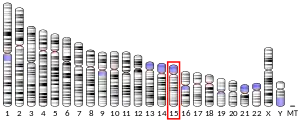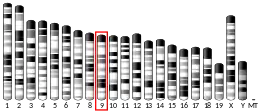| PDCD7 | |||||||||||||||||||||||||||||||||||||||||||||||||||
|---|---|---|---|---|---|---|---|---|---|---|---|---|---|---|---|---|---|---|---|---|---|---|---|---|---|---|---|---|---|---|---|---|---|---|---|---|---|---|---|---|---|---|---|---|---|---|---|---|---|---|---|
| Identifiers | |||||||||||||||||||||||||||||||||||||||||||||||||||
| Aliases | PDCD7, ES18, HES18, programmed cell death 7, 59K | ||||||||||||||||||||||||||||||||||||||||||||||||||
| External IDs | OMIM: 608138 MGI: 1859170 HomoloGene: 4170 GeneCards: PDCD7 | ||||||||||||||||||||||||||||||||||||||||||||||||||
| |||||||||||||||||||||||||||||||||||||||||||||||||||
| |||||||||||||||||||||||||||||||||||||||||||||||||||
| |||||||||||||||||||||||||||||||||||||||||||||||||||
| |||||||||||||||||||||||||||||||||||||||||||||||||||
| Wikidata | |||||||||||||||||||||||||||||||||||||||||||||||||||
| |||||||||||||||||||||||||||||||||||||||||||||||||||
Programmed cell death protein 7 is a protein that in humans is encoded by the PDCD7 gene.[5][6]
This gene encodes a protein with sequence similarity to a mouse protein originally identified in embryonic stem cells. In mouse T-cell lines, this protein appears to be related to glucocorticoid- and staurine-induced apoptotic pathways, and to be linked to ceramide-mediated signalling. These observations suggest that this gene product is involved in specific apoptotic processes in T-cells.[6]
References
- 1 2 3 GRCh38: Ensembl release 89: ENSG00000090470 - Ensembl, May 2017
- 1 2 3 GRCm38: Ensembl release 89: ENSMUSG00000041837 - Ensembl, May 2017
- ↑ "Human PubMed Reference:". National Center for Biotechnology Information, U.S. National Library of Medicine.
- ↑ "Mouse PubMed Reference:". National Center for Biotechnology Information, U.S. National Library of Medicine.
- ↑ Park EJ, Kim JH, Seong RH, Kim CG, Park SD, Hong SH (Apr 1999). "Characterization of a novel mouse cDNA, ES18, involved in apoptotic cell death of T-cells". Nucleic Acids Res. 27 (6): 1524–30. doi:10.1093/nar/27.6.1524. PMC 148348. PMID 10037816.
- 1 2 "Entrez Gene: PDCD7 programmed cell death 7".
Further reading
- Gerhard DS, Wagner L, Feingold EA, et al. (2004). "The Status, Quality, and Expansion of the NIH Full-Length cDNA Project: The Mammalian Gene Collection (MGC)". Genome Res. 14 (10B): 2121–7. doi:10.1101/gr.2596504. PMC 528928. PMID 15489334.
- Colland F, Jacq X, Trouplin V, et al. (2004). "Functional Proteomics Mapping of a Human Signaling Pathway". Genome Res. 14 (7): 1324–32. doi:10.1101/gr.2334104. PMC 442148. PMID 15231748.
- Will CL, Schneider C, Hossbach M, et al. (2004). "The human 18S U11/U12 snRNP contains a set of novel proteins not found in the U2-dependent spliceosome". RNA. 10 (6): 929–41. doi:10.1261/rna.7320604. PMC 1370585. PMID 15146077.
- Ota T, Suzuki Y, Nishikawa T, et al. (2004). "Complete sequencing and characterization of 21,243 full-length human cDNAs". Nat. Genet. 36 (1): 40–5. doi:10.1038/ng1285. PMID 14702039.
- Strausberg RL, Feingold EA, Grouse LH, et al. (2003). "Generation and initial analysis of more than 15,000 full-length human and mouse cDNA sequences". Proc. Natl. Acad. Sci. U.S.A. 99 (26): 16899–903. Bibcode:2002PNAS...9916899M. doi:10.1073/pnas.242603899. PMC 139241. PMID 12477932.
- Suzuki Y, Yoshitomo-Nakagawa K, Maruyama K, et al. (1997). "Construction and characterization of a full length-enriched and a 5'-end-enriched cDNA library". Gene. 200 (1–2): 149–56. doi:10.1016/S0378-1119(97)00411-3. PMID 9373149.
- Maruyama K, Sugano S (1994). "Oligo-capping: a simple method to replace the cap structure of eukaryotic mRNAs with oligoribonucleotides". Gene. 138 (1–2): 171–4. doi:10.1016/0378-1119(94)90802-8. PMID 8125298.
External links
- PDCD7 human gene location in the UCSC Genome Browser.
- PDCD7 human gene details in the UCSC Genome Browser.
This article is issued from Wikipedia. The text is licensed under Creative Commons - Attribution - Sharealike. Additional terms may apply for the media files.



